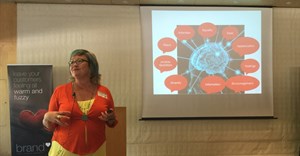
Subscribe & Follow
Jobs
- Public Relations Writer Midrand
- PR Account Manager Johannesburg
- Head of Content – What’s On, UAE & KSA Dubai
- PR and Digital Content Writer Sandton
- Group Account Director - Consumer PR and Influencer Cape Town
- Event Manager - PR Agency Johannesburg, Cape Town or DBN
- Senior Account Director - PR Agency Cape Town, Durban, or Johannesburg
Media management – getting it right!
As media relations plays a major role in most public relations programmes, it is essential for public relations practitioners to understand media policies and procedures. Journalists and public relations practitioners seldom see eye to eye. Even though journalists and public relations people recognise their differences, both realise that the one cannot live without the other. However, the journalist depends heavily on information disseminated by public relations practitioners, to stay on top of industry related issues.
Yes, journalists can be extremely difficult and often unpredictable. Nothing is more disheartening than having to stand in front of an audience and make excuses (yet again) for your media guests who have not arrived.
But, as the old saying says – it takes two to tango. Public relations practitioners can be just as unprofessional. There is nothing worse than receiving a news release with spelling and grammar errors. And even worse, harassing the journalists about publication of releases. This is not only a waste of your precious time, but also an irritation to journalists who surely do not like to be treated like high school kids. How could you even think that it would get published if it were not remotely newsworthy?
So why not get it right? I believe that the relationship between a public relations practitioner and a journalist should be mutually beneficial. If you want your story to reach your target public, then you should make sure that you use the correct medium. It is no use sending The Joys of Motherhood to the business pages of a publication.
Once you have established which media you are going to target, make sure you get to know how the media works and who gets the work done. Remember, treat others as you would like to be treated and always conduct yourself as a professional.
A few good tips to public relations practitioners might just make the difference.
And to keep the record straight these tips to journalists might help.
Both journalists and public relations practitioners should abide by a code of conduct. Registered practitioners of the Public Relations Institute of Southern Africa (PRISA) abide by the Code of Professional Standards and the Institute is committed to enhancing the relationship between public relations practitioners and journalists.
During 2002 PRISA will host media management residential workshops in the Western Cape and KwaZulu-Natal regions. Delegates will hear first hand what the media views as significant and timely issues. Techniques for both print and electronic media will assist delegates to develop and maintain media relations, based on a working knowledge of daily operational procedures.
These workshops will ensure that your press release does not become a mess release. Construction of the release, the 5Ws and H, approaches to different releases, style and the correct use of English will teach delegates how to get their stories published. It also focuses on the role that a media campaign plays in a public relations programme. Media liaison and management, as well as how to analyse the results of your media coverage, will be a benefit to any public relations practitioner, and in the long run also to the journalist.
No public relations practitioner should miss these opportunities to build better media relations.











